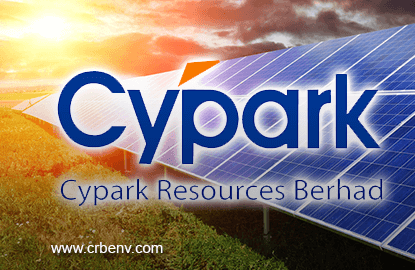
WHILE Cypark Resources Bhd’s operational risk is low, thanks to its concessions from the government and power purchase agreements with Tenaga Nasional Bhd, some analysts consider its financial risk a tad too high because of its gearing ratio of 75.05%.
Another concern, an analyst tells The Edge, is the group’s cash flow and receivables, which are equivalent to 68% of its sales. Also, its current ratio stands at 1.1 times and there is a potential funding mismatch as its long-term assets are financed by demandable bank borrowings.
Cypark CEO Datuk Daud Ahmad, however, explains that the huge borrowings are due to the nature of the group’s business. He does not see the debt as worrying as long as the group manages to generate sufficient cash flow and recurring income. “Our business transition to concession-based projects clearly requires us to invest in concession assets. Just like any power company in its infancy, we need to borrow to finance our assets.”
Daud indicates that the group will see an increase of around RM200 million in bank loans this year, mainly for the utilisation of existing long-term loans to finance the group’s current projects. But based on its healthy earnings, he believes Cypark will likely maintain its gearing ratio.
He also points out that if the group secures a new job, for example the solar project it has bid for in Singapore, it will need to borrow for asset investment. “Most of the funding will be bank borrowings and some will be internally generated. As a last resort, we will turn to our shareholders for funds,” Daud says, adding that management could also rope in a partner for equity.
According to him, management has engaged with its consultants to enhance the group’s financing model. “Our financing model is dynamic. There is always an option there to convert our loans into much longer and cheaper loans, like bonds. We could also tap private debt, which could be more favourable to us.”
Daud, however, assures that the group has sorted out its project funding requirements and does not see the need to raise funds from the shareholders for the Ladang Tanah Merah smart waste-to-energy project. He is confident that the project’s future income will be enough to pay off the loan and even implement a better dividend policy for investors. “We expect our cash flow to be better and more stable after the waste-to-energy plant commences operations. So if everything goes according to plan, shareholders can expect better dividends.”
Indeed, under its transformation plan, Cypark is targeting higher dividends by 2020 — up to 40% of the group’s net profit. Currently, it distributes 25% of its net profit.
Cypark’s shares rose 32.93% from a year low of RM1.62 in February last year to close at RM2.22 last Friday. Two research houses — PublicInvest Research and CIMB Research — have “buy” calls on Cypark with target prices of between RM2.40 and RM2.64.
A fund manager opines that the prospects for renewable energy are promising and that as the country’s largest player in the industry, Cypark will continue to benefit even if the market becomes competitive.
He says the stock, whose price-earnings ratio stands at 10.91 times, is not as heavily traded as other power counters because renewable energy is still deemed a high-risk investment.
As at Feb 3, Cypark executive chairman Tan Sri Razali Ismail was the group’s largest shareholder with an 18.69% stake, followed by Daud (16.02%) and Lembaga Tabung Haji (10.11%).
Save by subscribing to us for your print and/or digital copy.
P/S: The Edge is also available on Apple's AppStore and Androids' Google Play.